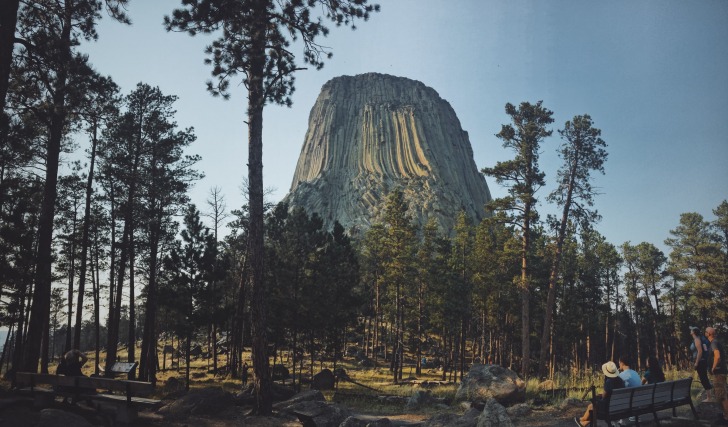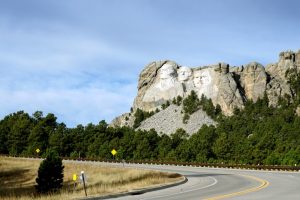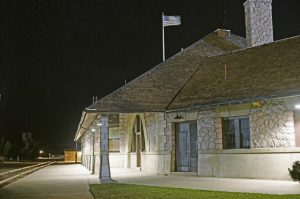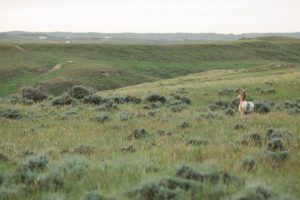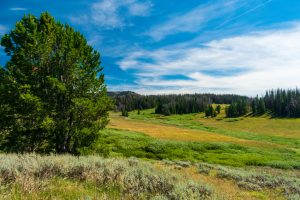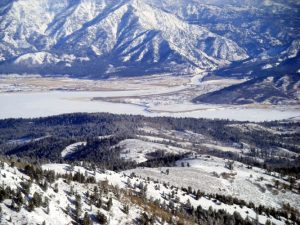 Wyoming : Safety by City
Wyoming : Safety by City
- Afton
- Alpine
- Casper
- Cheyenne
- Cody
- Dubois
- Gillette
- Guernsey
- Hulett
- Jackson Hole
- Laramie
- Lovell
- Lusk
- Pinedale
- Ranchester
- Rock Springs
- Saratoga
- Sheridan
- Sundance
Wyoming is a beautiful mountainous rural state with the smallest population in the nation with 578,000 residents.
There are 30 cities in the United States with more people.
It is not the smallest state but has the second-fewest people per square mile in the nation at six.
Wyoming is filled with natural wonders.
Yellowstone National Park is northwest of the Rocky Mountains.
It was the first state to have a national forest, and the first to have a national monument, and the first to let women vote.
It is famous for cowboys, rodeo, and the great outdoors.
There are huge mountains, deserts, lush wilderness, and sometimes you can drive for hours without seeing another person.
Cheyenne is the biggest city, and Casper is second.
Both have a lot of Old West history.
They are the only two towns with more than 50,000 people.
Warnings & Dangers in Wyoming

OVERALL RISK: MEDIUM
There are some natural dangers in Wyoming, but that danger is not necessarily from crime. The state has the highest rate of traffic deaths in the nation and ranks low in auto safety laws. It also leads the nation in gun deaths per capita. It also leads the nation in the rate of hiking accidents. There is low crime. It has the eighth-lowest violent crime rate in the nation.

TRANSPORT & TAXIS RISK: LOW
Only a few cities have taxis, and there is not a lot of public transportation available. If you are visiting the state, you should rent a car to get around. The problem with public transportation is not dangerous, but the lack of it.

PICKPOCKETS RISK: LOW
There are very few pickpockets in Wyoming. This crime is rarely reported. People carrying less cash, and cards being more secure, has made this crime less desirable than it used to be.

NATURAL DISASTERS RISK: HIGH
Wyoming has the seventh-highest rate of earthquakes in the nation. Fortunately, most are not in populated areas, but that there are a lot gives one pause. This also leads to a lot of mudslides. There is not much, if any, flooding, but the mountainous areas present their dangers. There can also be heavy snow in winter.

MUGGING RISK: LOW
The violent crime rate is very low in Wyoming, below the national average in many categories, including mugging. It does not happen a lot in rural areas. More common crimes are property crimes when doors are left unlocked.

TERRORISM RISK: LOW
Terrorists have not attacked rural areas, and they have never attacked Wyoming. In recent years there has been growing concern about domestic terrorists from extremist groups. The state does have a high gun death rate, but that has not been due to terrorism.

SCAMS RISK: LOW
Tourists are rarely scammed. In tourist areas, sometimes tourists are charged more than locals, but you can also see that as locals getting a discount. Scammers are usually trying to do identity theft or take advantage of elderly people. It is rare, but at times people add charges to credit cards.

WOMEN TRAVELERS RISK: LOW
Women often travel alone in Wyoming, and it is not seen as unusual. Women even hike alone in wilderness areas and are safe. The dangers here are the same as they are for men. Most of them are from natural causes.

TAP WATER RISK: LOW
Most tap water comes from underground and is very safe. There are no known issues with any of the state’s water systems. The concern in Wyoming is having enough water. It is a dry state and getting dryer with global warming. The concern then is the availability of water, more than the quality of water.
Safest Places to Visit in Wyoming
Surprisingly, perhaps, the safest places to visit in Wyoming might be the two biggest cities, Cheyenne and Casper.
Both have very low crime rates, and both are small enough to not feel overwhelmed.
Both have a lot of history and interesting things to see.
Yellowstone National park and Grand Teton National Park are also safe places to visit because of the low crime rate.
There are natural dangers in Yellowstone.
These are great natural areas, and they are tourist areas.
There are a lot of safety precautions built-in with these areas.
If you stay on the beaten path there is little danger.
The small towns of Worland, Torrington, and Green River have very low crime rates and are safe any hour of the day.
In many states, the rural areas are the safest and that may not be the case with Wyoming.
Places to Avoid in Wyoming
It sounds strange, but the highways are the most dangerous place in Wyoming with one of the highest deaths per capita in car crashes.
U.S. Highway 287 is a two-lane road that goes through two mountain ranges.
Severe weather and low visibility are common. It is one of the most traveled roads in the state.
While Yellowstone National Park is generally safe, there are dangers from geysers, hot springs, and animals like bears.
In the western part of the state, avalanches and mudslides are a problem and can surprise the unwary traveler.
One of the most dangerous towns in Douglas.
It has the highest property crime rate in the state but is still just barely above the national average.
The most dangerous mountain bike trail in the world could be Lunatic Fringe on the Green River.
A four-mile trail has a four-mile elevation change of 6,155 feet and drops as high as seven feet.
Safety Tips for Traveling to Wyoming
- Watch the weather. Snow is a big hazard in winter, and even in spring. It can change quickly, so keep an eye on the weather report. Always heed warnings to stay safe. In mountainous areas, the weather can change quickly.
- Check Road conditions. The state has a website for checking road conditions. This is especially useful in winter, as some roads get closed at times due to snowfall. It is also a good idea even when it is not snowing to find out where there are issues with roadways.
- Drive defensively. Wyoming is one of the most dangerous states in the nation when it comes to highways. Wyoming is at or near the top each year in traffic fatalities and car crashes per thousand people in the nation. Many roads are narrow, with lots of turns and steep inclines in the mountains.
- Take care of your car. Check your tires often, as well as fluid levels, belts, and hoses. Make sure your wiper blades are ok as well as your lights. There are a lot of remote areas where there may not be a phone signal. A breakdown could force you into a very long walk that could be dangerous.
- Don’t take chances. When you are in remote areas, there can be avalanches and mudslides that can cause roads to be closed. Don’t try to go on a road that has been closed or ignore warnings given by officials. Taking a risk probably won’t save time but will put you in real danger.
- Lock your car. Wyoming has a very low crime rate, but there is still some crime. Don’t get a false sense of safety and get too careless. Keeping your property locked will keep it safe. The few criminals there are looking for things like open doors and don’t often break into cars. Avoid problems by being cautious.
- Watch your step. There are lots of great hiking areas, and many of them are in steep areas in the mountains. They are safe for the experienced and careful hiker. Accidents happen out in the wild when people are not careful about where they are walking.
- Dress appropriately. Wear sturdy boots that are appropriate for rugged hiking when out in nature, and wear clothing that will protect you from the elements. Take extra clothing along if you are camping in the wild as it may turn cold during the night all year long.
- Don’t feed the bears. Don’t feed them or any other wild animal. Bears can become aggressive and dangerous. It is bad for wild animals to be given the food we eat. It can also cause them to become aggressive in certain situations.
- Keep friends informed. Let someone know where you are going and when you plan to be back. This is especially true if you are going to remote areas.
So... How Safe Is Wyoming Really?
Wyoming is unique among the states when it comes to danger.
Crime is the biggest danger in most states, but that is low here.
In Wyoming, you are more likely to be injured in a car crash or hurt while out in nature.
Wyoming has 19.2 deaths per 100,000 people on the highways, which has been in the top five nationally for several years.
The national average is 11 per 100,000.
Wyoming is the least-populated state, and its’ total number of car-related deaths, 100 last year is among the lowest totals.
Speed limits are high and there are remote areas.
You can drive 70 mph on two-lane highways, and 50 on dirt roads, which is above the national average as well.
There are also a lot of remote two-lane highways through the mountains where the weather can be an issue, with a lot of turns and steep roads.
There are geysers and hot springs, as well as black bears, which is dangerous if not respected.
Crime rates have been below the national average for a few years.
There are 2.2 violent crimes per 1,000 people, and the national average is 3.7.
Property crime has done down some, with a rate of 15.7 per 1,000, and the national average is 21.1.
The low level of crime is one thing, but how concerned local people are about the crime is another great measure.
Wyoming leads the nation in having the fewest number of people concerned about crime, with only 26 percent saying they have any concern about being a crime victim.
Wyoming residents are much less concerned about things like violent crime, property crime, and gun violence than any people in any other state.
How Does Wyoming Compare?
| State | Safety Index |
|---|---|
| Wyoming | 70 |
| Kansas | 81 |
| Iowa | 82 |
| Idaho | 85 |
| Illinois | 77 |
| Indiana | 61 |
| Alaska | 65 |
| Colorado | 82 |
| Florida | 70 |
Useful Information

Visas
Visas are needed to enter the country, but if you are already in the United State legally, you do not need one. Since Wyoming does not have large cities with big airports, and it is landlocked, you are not physically able to enter the state directly from another country.

Currency
The U.S. Dollar is the standard currency in the nation and Wyoming. Credit cards are accepted from any country. You may exchange the currency if you wish at any bank, but you can operate with credit cards only if you like.

Weather
Winters can be very cold. Summers are pleasant but can be chilly at night in higher elevations. Bring some warm clothing any time of the year, but especially in fall and winter. Snow can be heavy and can come suddenly in winter.

Airports
The Airport at Casper is the biggest in the state and is a national airport. There are only six airports with scheduled commercial flights. There are some small airports in small towns that service private planes.

Travel Insurance
You are not likely to be a crime victim in Wyoming, but there are dangers in the outdoors. That is a good reason to have travel insurance, which covers a lot of the natural causes that could interrupt your travel plans.
Wyoming Weather Averages (Temperatures)
Average High/Low Temperature
| Temperature / Month | Jan | Feb | Mar | Apr | May | Jun | Jul | Aug | Sep | Oct | Nov | Dec |
|---|---|---|---|---|---|---|---|---|---|---|---|---|
| High °C | 4 | 5 | 9 | 13 | 18 | 24 | 29 | 27 | 22 | 15 | 8 | 4 |
| Low °C | -8 | -8 | -4 | -1 | 4 | 9 | 13 | 12 | 7 | 1 | -4 | -8 |
| High °F | 39 | 41 | 48 | 55 | 64 | 75 | 84 | 81 | 72 | 59 | 46 | 39 |
| Low °F | 18 | 18 | 25 | 30 | 39 | 48 | 55 | 54 | 45 | 34 | 25 | 18 |
Wyoming - Safety by City
| City | Safety Index |
|---|---|
| Afton | 82 |
| Alpine | 83 |
| Casper | 80 |
| Cheyenne | 81 |
| Cody | 80 |
| Dubois | 78 |
| Gillette | 83 |
| Guernsey | 78 |
| Hulett | 79 |
| Jackson Hole | 81 |
| Laramie | 85 |
| Lovell | 81 |
| Lusk | 82 |
| Pinedale | 75 |
| Ranchester | 80 |
| Rock Springs | 81 |
| Saratoga | 78 |
| Sheridan | 84 |
| Sundance | 80 |
